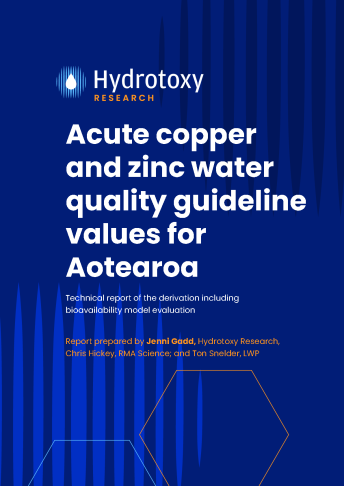Copper and zinc are common contaminants in freshwater environments, particularly in urban areas. Stormwater inputs can significantly increase copper and zinc levels during rain events. Acute guideline values (GVs) are used to evaluate the potential effect of these contaminants on aquatic organisms.
Copper and zinc are common contaminants in freshwater environments, particularly in urban areas. Stormwater inputs can significantly increase copper and zinc levels during rain events. Acute guideline values (GVs) are used to evaluate the potential effect of these contaminants on aquatic organisms.
This report details the derivation of acute GVs for copper and zinc for use in New Zealand water management. This included:
· toxicity testing with a native species (cladoceran) in waters with differing water chemistries
· evaluating and selecting bioavailability models for copper and zinc
· collating and reviewing toxicity data for use in the derivation
· deriving the guideline values and evaluating their robustness
· providing guidance on using the GVs for water management in New Zealand, including within attribute tables that could be used to assess state under the National Policy Statement for Freshwater Management.
These steps are reported on in this technical report and associated appendices. Additional details of model evaluation inputs, results and toxicity data are available as supporting information in the excel file below.
A user guide accompanies the report which provides the GVs, describes where and how they should be used, and includes a brief description of the derivation methods.
- Read the appendices [PDF, 8.3MB]
- View the model evaluation inputs, results and toxicity data [XLSX, 1.8MB]
- Read the user guide
